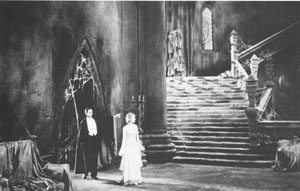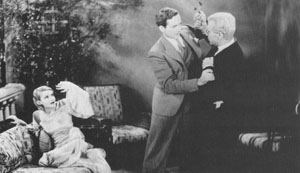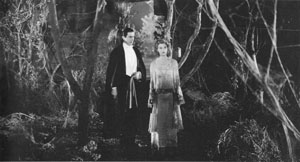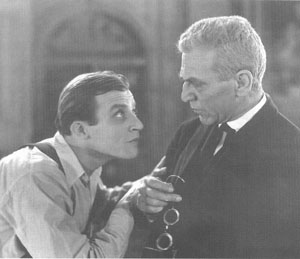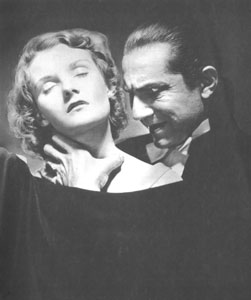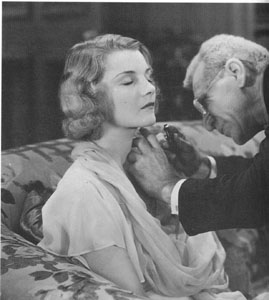
DRACULA

For a film by a major director which became Universal's biggest box-office hit of the year and which provided the impetus for a whole generation of horror movies, Dracula really isn't terribly good. One reason for this may be that Tod Browning, who often dreamed up his own scenarios, here did not even go back to the book. The script is based on the Hamiton Deane play, as Americanized by John L. Balderston, in which Lugosi had appeared on Broadway in 1927. Universal originally bought the rights as a vehicle for Lon Chaney. When Chaney died it was inherited by Lugosi, and it may well be that this change, with Lugosi so familiar with the play after a two-year run, inhibited Browning from rethinking the material. At all events, the first 20 minutes - predominantly silent, with the arrival of Renfield and the drive to Castle Dracula with a bat leading the way - are astonishingly fluid and brilliantly shot by Freund despite the painted backdrops. There are innumerable imaginative touches to treasure here. The sinister emphasis of Lugosi's first line ( "I ......am Dracula. I bid you welcome") and the sonorous poetry of his invocation to the children of the night; the moment when Dracula leads the way up his castle stairway behind a vast cobweb through which Renfield has to fight his way as he follows; and the vampire women, driven off by Dracula, reluctantly backing away from the camera while it continues hungrily tracking in to Renfield's fallen body. Thereafter the pace falters, and with the London scenes growing in verbosity and staginess, the hammy limitations of Lugosi's performance are cruelly exposed. But the brilliant moments continue (Renfield's frenzy in his cell, for instance), and Karl Freund's camerawork rarely falters.

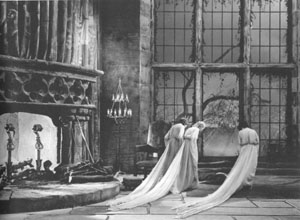

![]()
